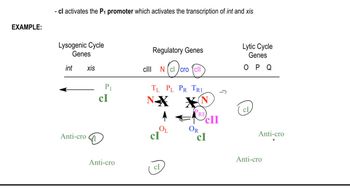Table of contents
- 1. Introduction to Genetics51m
- 2. Mendel's Laws of Inheritance3h 37m
- 3. Extensions to Mendelian Inheritance2h 41m
- 4. Genetic Mapping and Linkage2h 28m
- 5. Genetics of Bacteria and Viruses1h 21m
- 6. Chromosomal Variation1h 48m
- 7. DNA and Chromosome Structure56m
- 8. DNA Replication1h 10m
- 9. Mitosis and Meiosis1h 34m
- 10. Transcription1h 0m
- 11. Translation58m
- 12. Gene Regulation in Prokaryotes1h 19m
- 13. Gene Regulation in Eukaryotes44m
- 14. Genetic Control of Development44m
- 15. Genomes and Genomics1h 50m
- 16. Transposable Elements47m
- 17. Mutation, Repair, and Recombination1h 6m
- 18. Molecular Genetic Tools19m
- 19. Cancer Genetics29m
- 20. Quantitative Genetics1h 26m
- 21. Population Genetics50m
- 22. Evolutionary Genetics29m
17. Mutation, Repair, and Recombination
Induced Mutations
Problem 17a
Textbook Question
Textbook QuestionDescribe how the Ames test screens for potential environmental mutagens. Why is it thought that a compound that tests positively in the Ames test may also be carcinogenic?
 Verified Solution
Verified SolutionThis video solution was recommended by our tutors as helpful for the problem above
Video duration:
1mPlay a video:
Was this helpful?
Key Concepts
Here are the essential concepts you must grasp in order to answer the question correctly.
Ames Test
The Ames test is a widely used assay that evaluates the mutagenic potential of chemical compounds by measuring their ability to induce mutations in the DNA of specific strains of bacteria, typically Salmonella typhimurium. The test involves exposing these bacteria to the compound in question and assessing the rate of mutation, which is indicated by the bacteria's ability to grow in the absence of histidine, an amino acid they normally require.
Recommended video:
Guided course

Induced Mutations
Mutagenesis and Carcinogenesis
Mutagenesis refers to the process by which genetic mutations are induced, potentially leading to changes in cellular function. Carcinogenesis is the subsequent process where these mutations contribute to the development of cancer. Compounds that are mutagenic can disrupt normal cellular processes, leading to uncontrolled cell growth, which is a hallmark of cancer.
Recommended video:
Guided course

Induced Mutations
Correlation between Mutagens and Carcinogens
There is a significant correlation between mutagens and carcinogens, as many substances that cause mutations in DNA can also lead to cancer. This is because mutations can result in the activation of oncogenes or the inactivation of tumor suppressor genes, both of which are critical in regulating cell growth and division. Therefore, a positive result in the Ames test suggests that a compound may pose a risk for carcinogenicity in humans.
Recommended video:
Guided course

Decision Between Lytic and Lysogenic Cycles

 4:29m
4:29mWatch next
Master Induced Mutations with a bite sized video explanation from Kylia Goodner
Start learningRelated Videos
Related Practice

